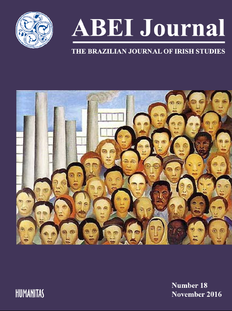‘The Soul Shone Through His Face’: Roger Casement in Works of Fiction
DOI:
https://doi.org/10.37389/abei.v18i0.3518Abstract
The aim of this article is to discuss the issue of the representation of the Irish revolutionary Roger David Casement in works of fiction and radio
drama under the light of cultural trauma theory. It will investigate the way in which the image of Roger Casement can be associated with traumatic events that have sealed Anglo-Irish relations in his life, in Arthur Conan Doyle’s The Lost World (1912) and Jamie ONeill’s At Swim, Two Boys (2001); in his trial in Mario Vargas Llosa’s The Dream of the Celt, and finally, and in his afterlife, in David Rudkin’s Cries from Casement as his Bones are Brought to Dublin and in the Annabel Davis-Goff’s The Fox’s Walk.
Keywords: Roger Casement, trauma, representation, history, fiction.


